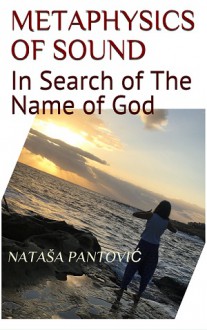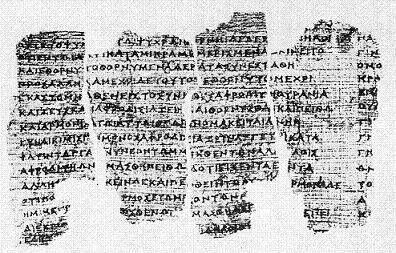


A rich and bustling community of 2,000 people, at its peak, had built 66 temples during the period of 1,000 years. Now, a new exciting archaeological excavation at Tas-Silġ in Marsaxlokk, sheds further light about Neolithic Temple Builders of Malta. In British times Neolithic were confused with Phoenicians origins, so most of the artefacts did stay in Maltese hands, now exhibited in Archaeological Museum in Valletta and within the Temple Complexes. With the development of meta-physics, meta-psychology, or micro-biology, our scientists and researchers stay amazed with the Culture that used healing with sounds within their rituals, had extra-ordinary artists that sculpted with precision, had architects, clothes makers, and farmers that fertilised their cultivated land. The Island’s first Temples have been unearthed during the British excavation in 1830 - 1840, at the same time with Crete excavation, and since the Islands were during the Second World War a British colony, viewed as a military zone, they have experienced lots of bombarding and damage to all the buildings. Hypogeum, the most amazing 11 meters deep, carved in stone underground temple, was for example used as a Bomb Shelter. It was only in 1970s that Malta gained its independence, and its scientists & archaeologists have started claiming the natural heritage from the investors, roads builders, and various other intruders. Nearly 6,000 years, numbering several thousand people, is far denser than the people of mainland Europe. The islands were visited by neighbouring islands, was a trading port and ritual site at the heart of the Mediterranean. The decisive blow to the Culture occurred around 2350 BC, when the whole region, geologists tell us, suffered a catastrophic climate event.
within World’s Black Archeological Market https://artof4elements.com/tag/art
Ever since its first discovery in 1908 by the Serbian archaeologist Miloje Vasić, Vinča culture, a Neolithic settlement that spanned most of Serbia, parts of Romania, Bulgaria & Macedonia, has been of great interest to the lay public and scientists alike.

In 2005, Police in central Germany found the artifacts that date to the Neolithic period and are believed to belong to the Vinca, in a sports bag belonging to two Serbs. Last year, a 2,000 year old Roman monument weighing half a ton was stolen in 24 hours after the find. Such epigraphic monuments, stone monuments with Latin engraving text) are extremely rare in the world so the value is extremely high.
Learnings from Cyrillic Alphabet
History is a fascinating subject. Researching god or consciousness even more so! We read amazing accounts about ancient wisdom traditions such as Platonism, Orphism, Orthodox Christianity, and in China Taoism, and neo-Confucianism.

The insights from these traditions intersect with recent findings in metaphysics or biology. What brings the two into resonance is their mutual commitment to speak of the matter as alive. The four elements expressed through trinity that are defined by entangled triangle of relationships reflected in our language development.
Another visit to Serbia, this summer, and I was back researching the same scientific question, same puzzle that has certainly no answers yet it is an interesting exploration.
The genetic origins of Etruscans are mixed between aboriginal people of the region (Slavs?) and people from Europe predominantly Spain. The aboriginal population may have settled in Balkan millennia prior to the invasion.

The Etruscans occupied the region to the north of Rome, The Romans were their conquerors.
The Greek historian Herodotus tells us that the Etruscans came from Lydia. Sure enough historians argue who are the Lydians. Herodotus tells us of their ships and multitude, claiming that the half of the population left under the leadership of Tyrrhenus. Another Greek historian, Dionysius of Halicarnassus, in his Early History of Rome also claims that the Etruscan were the aboriginal inhabitants of their area. Slavs?
1. Northern Origins
2. Oriental (Near-eastern) Origins
The aboriginal peoples of North Italy could have been Slavs. The Adriatic Sea, the sea to the east of Italy, bordering Croatia, Slovenia and Montenegro, all Slavic states, was named after the Etruscan port of Adria. The funerary practices of the people of North Italy has the parallel to the Vinča Culture. The Etruscans cremated their dead, a practice also known in the Danube Culture, no grave yards have been found near the settlements for thousands of years.
This very vibrant culture hosted different nationalities. In the Etruscan ruins there are objects from Greece, North Africa, and southern France. The Etruscan traders brought those craft objects to Etruria. The major exports of Etruria was copper and iron from the local mines, the same found with their Northern neighbors.

The question became more intriguing when, in the nineteenth century, it was discovered that most of the languages of Europe belonged to one big language family called Indo-European but Etruscan was not one of them. Is this rightly so?
The linguist claim that Etruscan was not a member of the Indo-European language family was challenged by some Slavic archelogy and linguistic researchers. These Balkan Slavs, find the inspiring relationship between words, just introducing the now, in scientific circles, lost Š, Đ, Č, Ć, Ž, DŽ.

The analysis of the alphabet after reading this interesting book -


Art, Education, Symbols and Signs, Spirituality, Power of Mind, default
Metamorphoses. Transformation. A journey of a soul passing through Gaia, but also an epic poem in fifteen books written 2,000 years ago, by the Roman poet Ovid, completed in 8 AC inspired by the Ancient Greek Theogony Θεογονία “Birth of the Gods” attributed to Hesiod 700 BC, and the Derveni 500 BC.

The poet's writings are based on already fully established Ancient Greek manuscript tradition. Re-writing myths, the creation story, Ovid begins by describing how the elements emerge out of chaos, and how mankind degenerates from the Gold Age to the Silver Age to the Age of Iron. This is followed by an attempt by the giants (Titans) to seize the heavens, at which the God Jove sends a great flood which destroys all living things except one couple, Deucalion and Pyrrha.